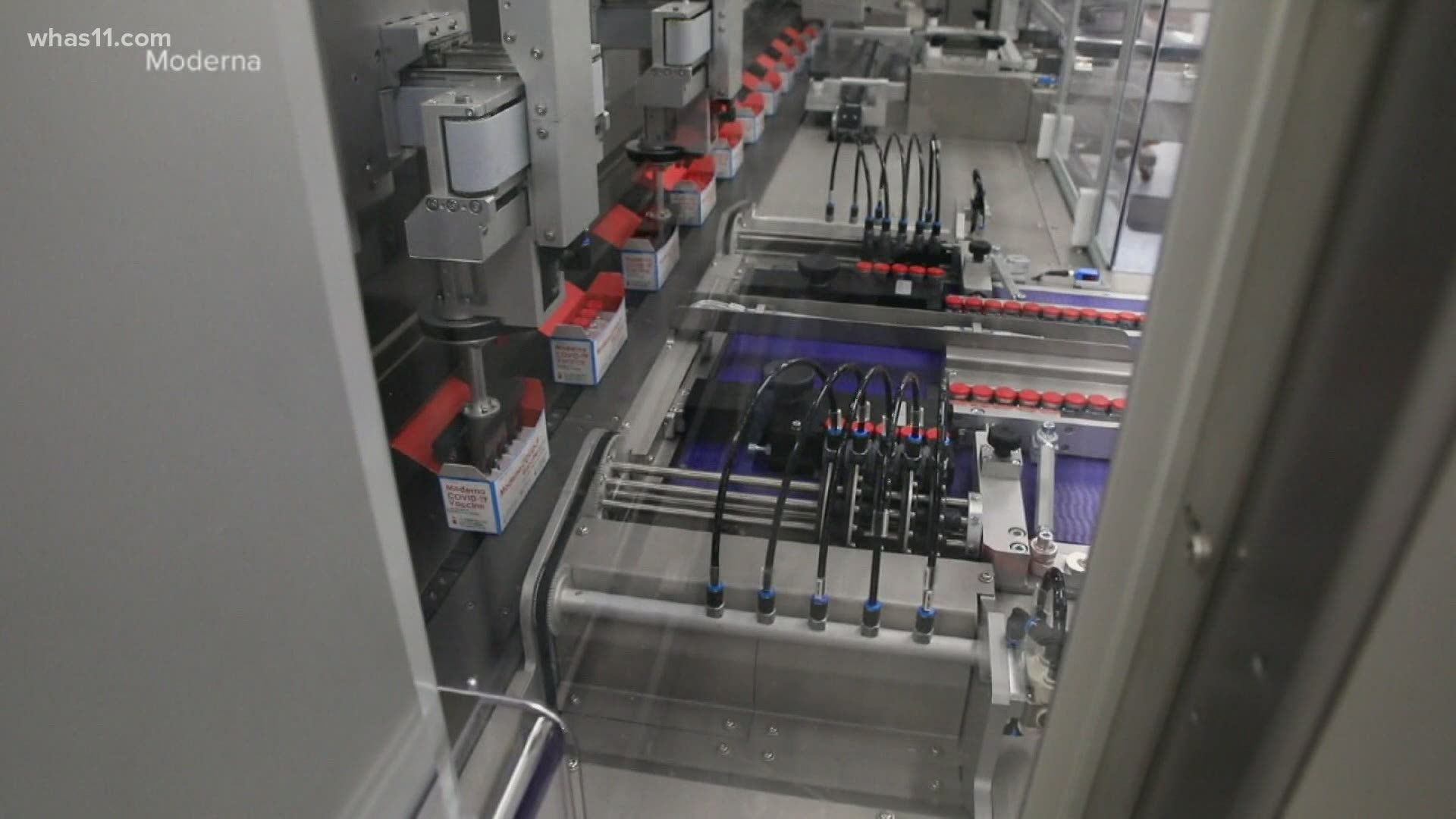FRANKFORT, Ky. — Coordinating distribution of a vaccine that is in short supply to millions of people is a tall task.
That’s what Kentucky’s Director of Vaccine Distribution Jim Gray, who is also the state’s Secretary of Transportation, is tasked with.
“This project has been described by UPS officials in fact as the largest single logistics effort and project in the history of the world,” Gray said.
The major factor that stands in the way of everyone who wants it getting the COVID-19 vaccine can be summed up in one word: supply.
Right now, counties are getting varied amounts of the vaccine, which Gray says is largely based on population density.
Gray used the example of Robertson County, which is northeast of Lexington.
It is the state’s smallest county with about 2,100 people. Say that county requests 100 vaccines, which doesn’t sound like a lot.
But if you take a look at how that number is then compared to other counties, the doses start to add up.
The state only gets so many doses allocated each week.
“We index that for Jefferson County with more than 700,000 people,” Gray said. “That would mean Jefferson County would be receiving about 36,000 vaccines when we've only been allocated 57,000. You can see how that becomes a real logistics challenge.”
Kentucky is well equipped to receive and distribute vaccines – there are 1,500 eligible providers throughout the state. But we can’t reach our full distribution potential without the supply.
Kentucky started distributing vaccines about six weeks ago. At the beginning, distribution was slow. Now, we’re speeding up. Last week, 57,000 doses were allocated to Kentucky.
“As we're going forward, that number is increasing, actually, an increase of about 15%,” Gray said.
This week allocation was 65,000. Gray noted that’s a good trend, but the pace still needs to get quicker.
“We're looking not at months. But literally, more than a year…if the pace doesn't accelerate,” Gray said.
Right now – the federal government is allocating doses to the states. Then suppliers, like Moderna and Pfizer, distribute the vaccines.
The governor has encouraged, additional vaccines from both the federal government and from Pfizer and from Moderna.
The request isn’t necessarily feasible. Gray says these pharmaceutical companies have quality control limitations.
The Biden administration is encouraging increased production capacity. The president wants to administer 100 million shots in his first 100 days in office.
But even then – it could be a year before everyone gets a vaccine. Take a look at Kentucky, for example.
“The vaccinations that are occurring today, let's say, 50,000 a week now (we're doing a little bit better than that),” said Gray. “That's 200,000 a month. Ten months is two million…well if we've got to get five million doses in arms, then that's going to take longer.”
Gray says if two other pharmaceutical companies’ vaccines are approved – Johnson & Johnson and AstraZeneca – that would mean a higher supply. Right now the FDA has not given either the green light.
►Contact reporter Rose McBride at rmcbride@whas11.com or on Facebook or Twitter.
►Make it easy to keep up-to-date with more stories like this. Download the WHAS11 News app now. For Apple or Android users.
Have a news tip? Email assign@whas11.com, visit our Facebook page or Twitter feed.

